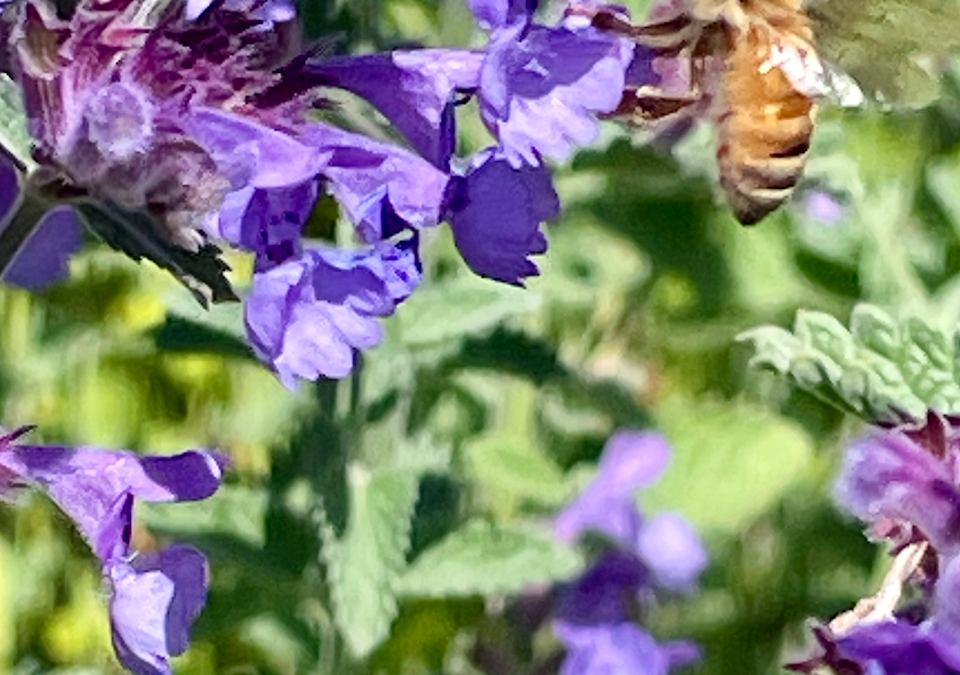The third week of June has been decreed pollinator week by Pollinator Partnership Canada.
This organization supports pollinator health through education, conservation and research, and envisions a future in which pollinators thrive.
June 17-23 celebrated all those small critters that have such a huge effect on our economies, environment and agriculture, and without which we humans would starve.
Pollinators move pollen from one flower to another, allowing plants to create seeds for subsequent generations.
Bees are vital pollinators but they are aided by wasps, flies, beetles, moths, butterflies, hummingbirds and bats.
Many people think of honeybees when they think of bees but these are an introduced species from Europe and are not native to North America.
There are, however, more than 350 species of bees that are native to the Okanagan.
These native, Okanagan bees are extremely efficient at pollinating. Unfortunately, pollinator numbers are in decline due to their death from pesticides, diseases and habitat loss.
We can all support pollinators by eliminating the use of pesticides, supplying a water source in the garden, and choosing to grow plants specifically for them.
Many xeriscape plants, both native and non-native, make excellent choices for pollinator gardens.
Use a mixture of annuals, perennials, and bulbs, including very early-flowering plants and very late, to offer a succession of bloom.
Consider early-blooming natives such as Amelanchier alnifolia, Saskatoon bush and Mahonia aquifolium, Oregon Grape and late blooming Heterotheca villosa, Hairy Golden Aster or Ericameria nauseosa, Rabbitbrush.
Crocuses and Chionodoxa are early blooming non-native bulbs, paired with a wide variety of non-native Sedums and Aster frikartii for blooms that will continue through until frost.
As a general rule, bees are drawn to blooms in shades of blue, purple, yellow, and white. Butterflies prefer red, blue, and purple flowers and moths are attracted to white and pale flowers which are more visible in the dark. Red and orange tubular flowers attract hummingbirds.
Research has shown that Achillea millefolium, our native yarrow, is the best perennial to plant for the largest number of pollinators. They like any plant with an umbrel shape on which they can sit and snack.
In our xeriscape demonstration garden, Nepeta racemosa ‘Walker’s Low’ is always a swarm of pollinator activity and we typically get three flushes of blooms resulting in lots of nectar throughout the season.
Planting large drifts of drought-tolerant long-blooming perennials such as Coreopsis, Echinacea, Rudbeckia, and Gaillardia, will help you attract more pollinators to your garden than with individual plants.
The Okanagan Xeriscape Association plant database at includes the many xeric plants which support pollinators and allows you to search by bloom time to choose those season-extending plants.
I will be touring Okanagan nurseries and garden centres throughout the gardening season supporting the many benefits of the Make Water Work plant list and campaign. Keep an eye on our social media for my schedule and stop in to say ‘hi’ and to talk all things xeriscape.
Sigrie Kendrick is a Master Gardener and executive director of the Okanagan Xeriscape Association. The Okanagan Xeriscape Association is grateful for the ongoing financial support of the Okanagan Basin Water Board and is proud to be collaborating with them on their Make Water Work campaign.




